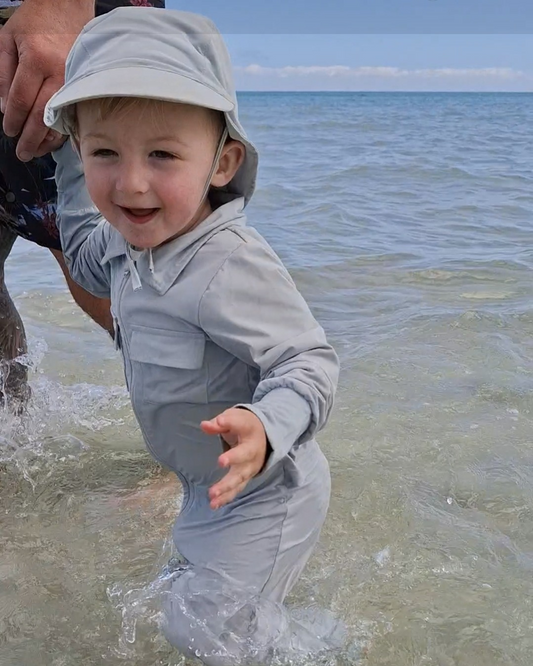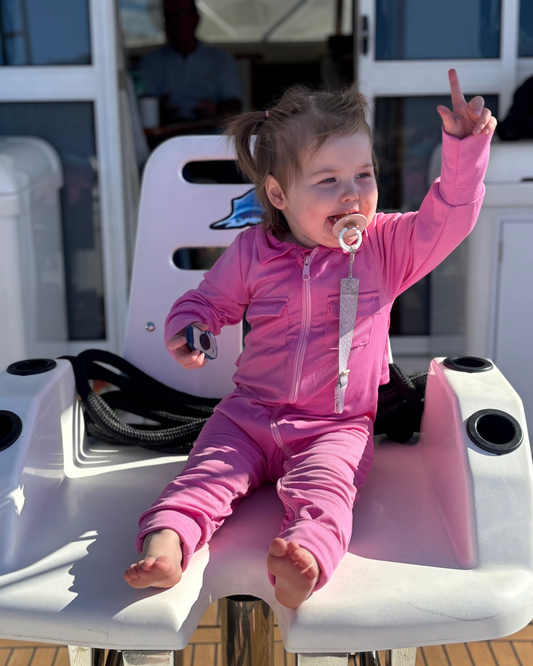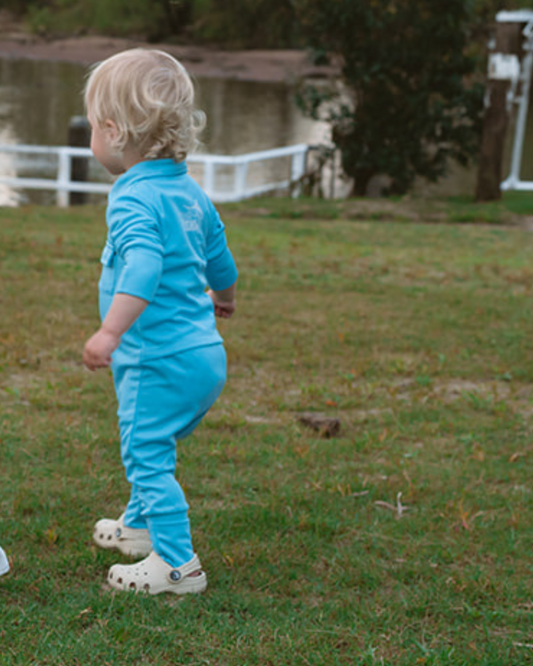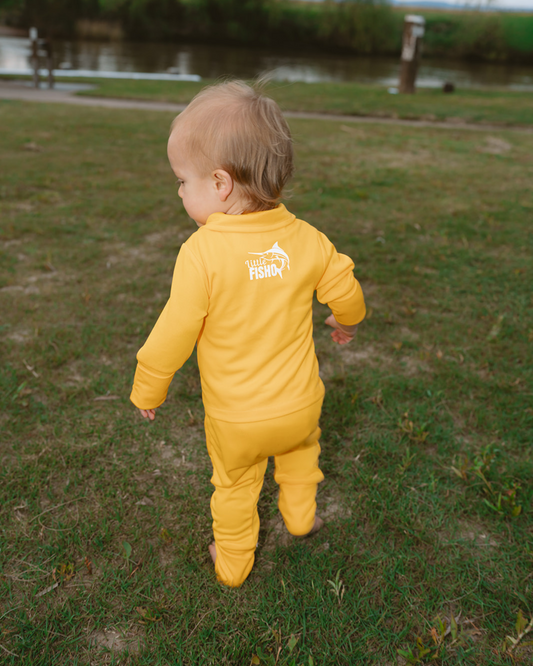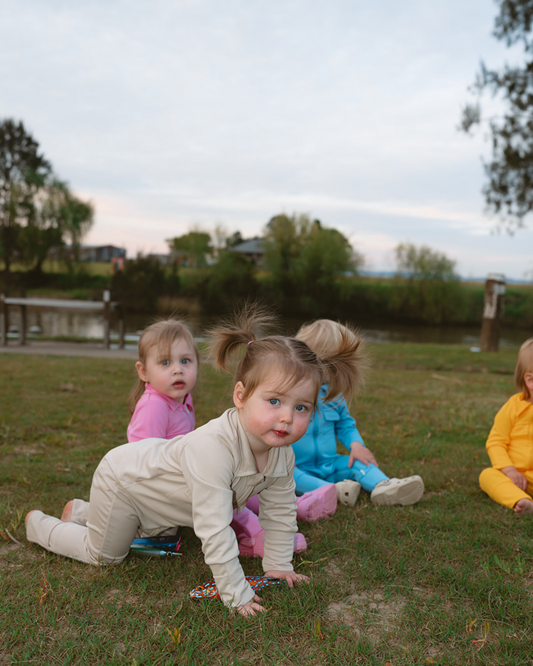When it comes to keeping babies safe outdoors, sun protection is one of the biggest concerns for new parents. But here’s the tricky part: babies under six months shouldn’t wear sunscreen. Their skin is thinner, more sensitive, and absorbs chemicals more easily than older children or adults.
So what can parents do when they still want to enjoy the outdoors as a family?
That’s where baby sunscreen alternatives come in. Safe, effective ways to shield your little one from harsh UV rays without relying on lotions.
Why Babies Shouldn’t Wear Sunscreen Under 6 Months
According to health authorities like the Cancer Council and Queensland Health, sunscreen isn’t recommended for babies under six months. Instead, they recommend:
- Shade first: prams with sun covers, beach tents, or natural shade.
- Protective clothing: long sleeves, long legs and foldable hand and foot covers (hello, Little Fisho UV Defender Onesie), plus wide-brimmed hats.
- Timing: avoiding the sun during peak UV hours.
For toddlers (6 months and up), sunscreen can be introduced, but even then, reapplication every 2 hours can be a battle... especially with wriggly kids who don’t love sitting still.
This is why so many parents are looking for practical sunscreen alternatives that don’t rely on chemicals and constant reapplication.
Baby Sunscreen Alternatives Every Parent Should Know
1. Sun-Safe Clothing (The #1 Alternative)
Full-coverage, lightweight clothing is one of the easiest and safest ways to protect your baby’s skin. Think:
- Long sleeves and long pants
- Breathable, moisture-wicking fabrics
- Wide-brim hats for face and neck coverage
👉 This is exactly why we designed the UV Defender Baby & Toddler Onesie. It covers arms, legs, and even has foldable hand and foot covers for extra protection. Families use it as a sunscreen alternative for fishing trips, camping, beach days, and even backyard play.
2. Portable Shade
Pop-up beach tents, pram shades, or even a picnic blanket under a tree can make a world of difference. Always check that shade moves with the sun, repositioning is key to keep babies protected.
3. Wide-Brimmed Hats
A must-have for babies and toddlers. Choose one with a chin strap (so it doesn’t fly off) and a brim that covers the ears and neck.
4. Timing is Everything
Early mornings and late afternoons are the safest times for sun play. Between 10 am and 3 pm, UV rays are at their strongest in Australia. So aim for shade or indoor play during these hours.
What About Toddlers?
Once your baby turns six months, you can add toddler-friendly sunscreen into the mix, but clothing should still be the first line of defence. Many parents find it’s easier to dress their toddler in protective clothing first, then use sunscreen only on exposed spots like the face, hands, and feet.
The Takeaway
When it comes to baby sunscreen alternatives, the safest, simplest, and most effective option is sun-safe clothing plus shade. Sunscreen can play a role once your child is older, but nothing beats the reliability of full-body coverage that doesn't wash or wear off.
That’s exactly why we created the UV Defender Baby Fishing Onesie, the only full-length, breathable solution for parents who want peace of mind while making memories outdoors.
Because outdoor adventures should be fun, not stressful. 🌞
👉 Explore the UV Defender Baby & Toddler Onesie – the sunscreen alternative Aussie families trust, certified by IP Australia.



